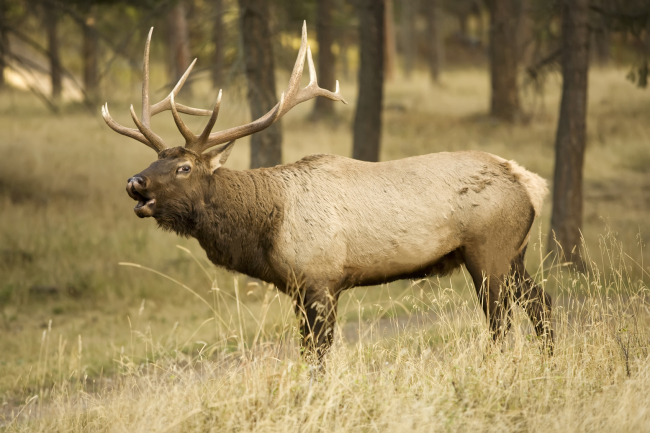If you haven’t seen it yet, Rocky Mountain Elk Foundation has a great social media campaign underway showing the many benefits hunting has on game species—and nongame species. With such a powerful outlet, RMEF is reaching people that might have never rationally considered hunting’s positive effects.
Hunting isn’t just an economic boon for wildlife, either; it provides management for predatory species that would otherwise go unchecked, as well as keeping deer numbers in check and protecting motorists. The research done on species like turkeys and elk helps other species that might not otherwise receive attention from the public at large. Everywhere you look, hunting is hard at work making the world a better place.
There are countless ways hunting is beneficial, but here are 25 that RMEF has compiled to help make the point:
- In 1907 only 41,000 elk remained in North America. Thanks to the money and hard work invested by hunters to restore and conserve habitat, today there are more than 1 million.
- In 1900 only 500,000 whitetails remained. Thanks to conservation work spearheaded by hunters, today there are more than 32 million.
- In 1900 only 100,000 wild turkeys remained. Thanks to hunters, today there are more than 7 million.
- In 1901 few ducks remained. Thanks to hunters’ efforts to restore and conserve wetlands, today there are more than 44 million.
- In 1950 only 12,000 pronghorn remained. Thanks to hunters, today there are more than 1.1 million.
- Habitat, research, and wildlife law enforcement work, all paid for by hunters, helps countless non-hunted species.
- Through state licenses and fees, hunters pay $796 million a year for conservation programs.*
- Through donations to groups like RMEF, hunters add $440 million a year to conservation efforts.*
- In 1937 hunters actually requested an 11 percent tax on guns, ammo, bows, and arrows to help fund conservation. That tax, so far, has raised more than $8 billion for wildlife conservation.*
- That same 11 percent tax on guns, ammo, bows, and arrows generates $371 million a year for conservation.*
- All together, hunters pay more than $1.6 billion a year for conservation programs. No one gives more!*
- Three out of four Americans approve of hunting, partly because hunters are America’s greatest positive force for conservation.
- Every single day U.S. sportsmen contribute $8 million to conservation.
- Hunting funds conservation and the economy, generating $38 billion a year in retail spending.*
- Female participation in hunting (3.35 million) is on the rise thanks to a ten percent increase from 2008 to 2012.
- More people hunt (19.3 million) each year than play soccer (13.7 million), tennis (13.6 million), or baseball (12.1 million).
- A wildlife management tool, hunting helps balance wildlife populations with what the land can support, limits crop damage, and curtails disease outbreaks.
- Hunters help manage growing numbers of predators such as cougars, bears, coyotes, and wolves. Our government spends millions to control predators and varmints while hunters have proven more than willing to pay for that opportunity.
- Hunting has major value for highway safety. For every deer hit by a motorist, hunters take six.
- Hunting supports 680,000 jobs, from game wardens to waitresses, biologists to motel clerks.
- Hunters provide for conservation—and for their families. Hunting is a healthy way to connect with nature and eat the world’s most organic, lean, free-range meat.
- Hunters are the fuel behind RMEF and its 6.8 million-plus acres of habitat conservation. More than 95 percent of RMEF’s 205,000 members are passionate hunters.
- Avid hunter Theodore Roosevelt created our national forests and grasslands and forever protected 230 million acres for wildlife and the public to use and enjoy.
- With funding from hunters, RMEF helped restore wild elk herds in seven states and provinces.
- As society loses its ties to wildlife and conservation, the bonds with nature formed by hunting are the greatest hope for creating the next generation of true conservationists.
*Financial info via America’s Sporting Heritage: Fueling the American Economy (January 2013) and Hunting in America: An Economic Force for Conservation (January 2013)

